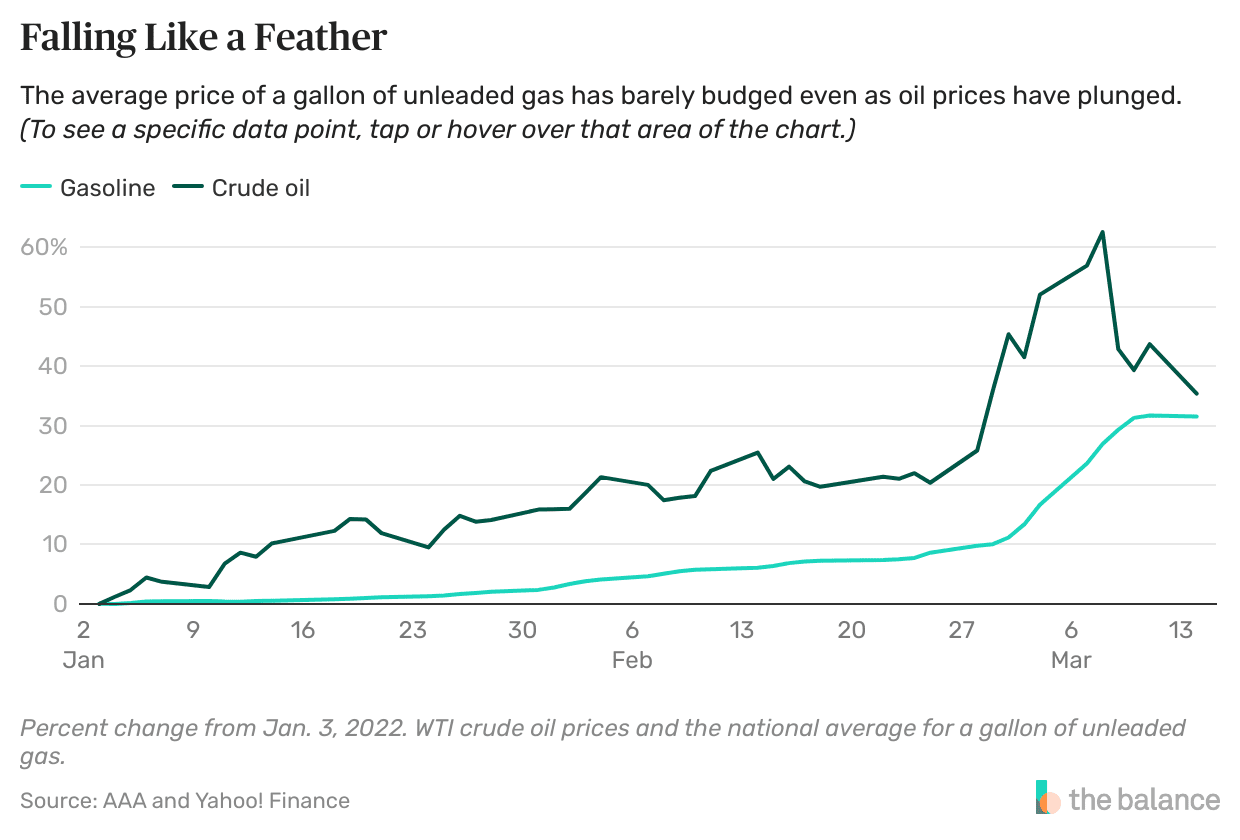It didn’t take long for the price of gasoline to spike along with crude oil this month. But as oil drops back down, will we see the same dramatic shift at the gas pump? Don’t hold your breath.
As of Tuesday, the average price for a gallon of unleaded gas had dipped only about 1 cent since reaching a record high of $4.33 Friday—72 cents higher than it was just a week a half earlier. Meanwhile, the market price of the crude oil is made from dropped about 13% over the same period. As the chart below shows, the decline in crude has barely made gasoline budget.
The reluctance of pump prices to decline tracks with what economists have coined the “rockets and feathers” phenomenon: When gas follows oil upwards, it rises like a rocket (after a bit of a lag) but in a downturn, it falls like a feather.
Why? Keep in mind gas stations are further along in the supply chain, so it’s not just the cost of crude affecting prices, but also refiner profit margins and local competition among stations. When prices are falling, consumers may be less adamant about finding the best prices, easing the competitive pressure on stations to lower them, economists have suggested. And that usually means gas stations run on thinner profit margins when prices rise, and fatter ones when they’re falling.
“Crude prices have come under pressure but that won’t be helping Americans at the pump anytime soon,” Edward Moya, a senior market analyst at OANDA, said in an email. “Gas stations didn’t do well at all given crude prices jumped from $90 to $130 in about a week, so they will take their time lowering prices.”
Oil prices are now getting closer to where they were before Russia’s invasion of Ukraine, partly because of optimism that oil supplies from Russia—under severe sanctions for launching a war—could be replaced by supplies from other countries.
Have a question, comment, or story to share? You can reach Diccon at [email protected].
